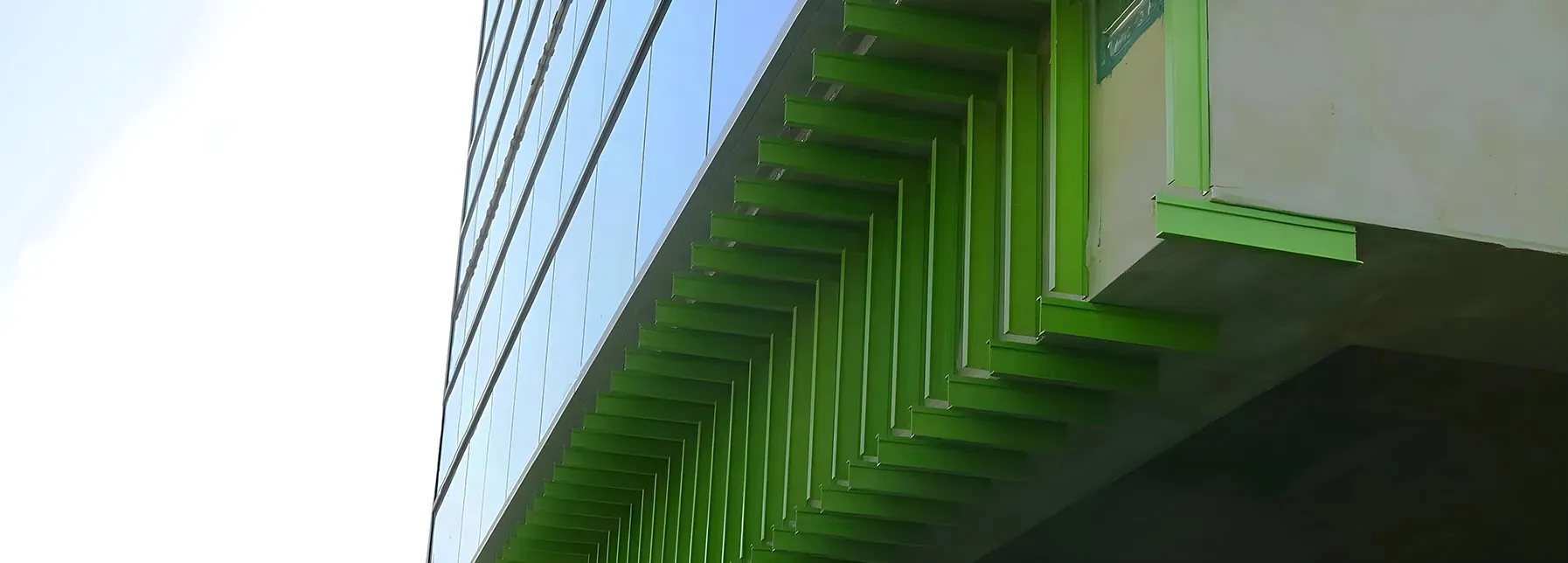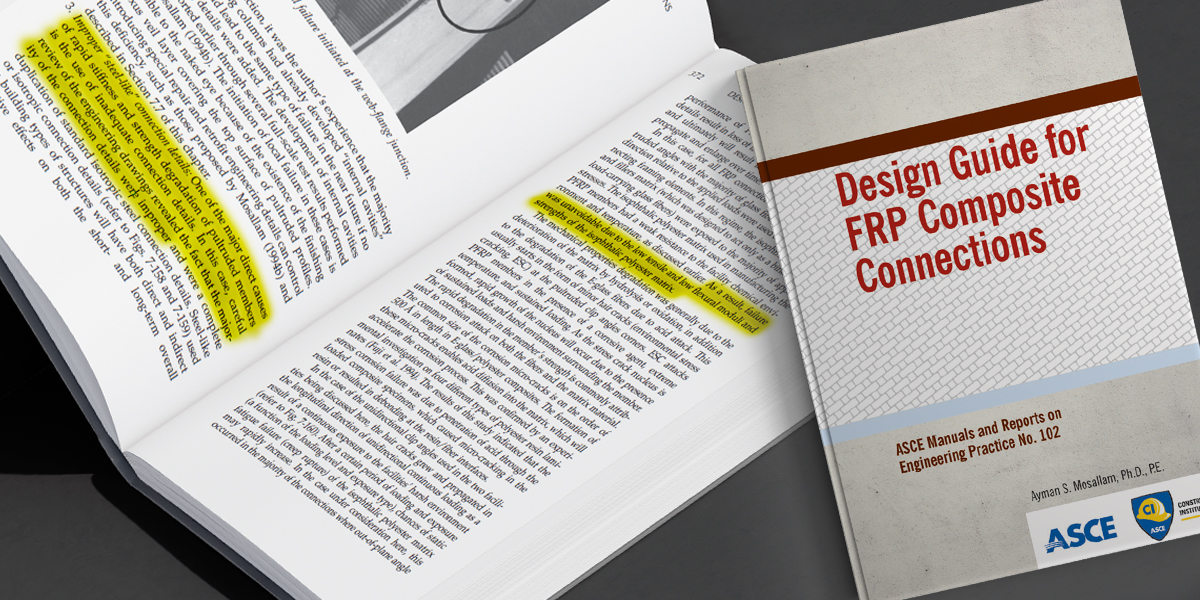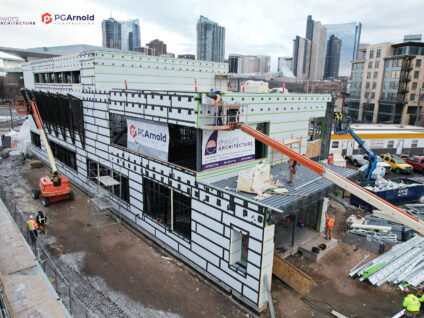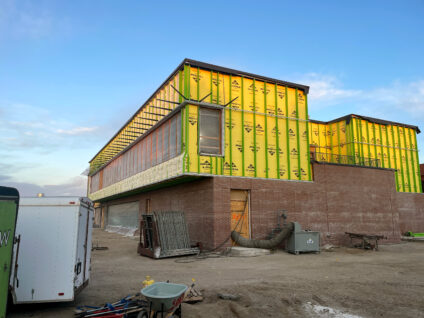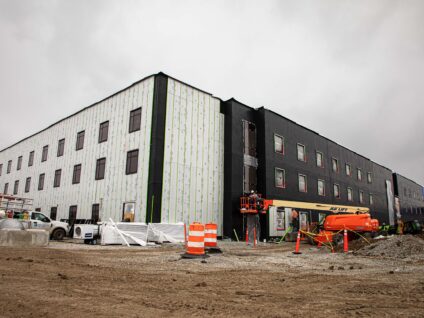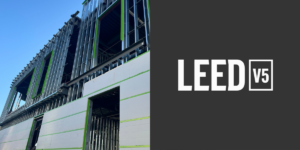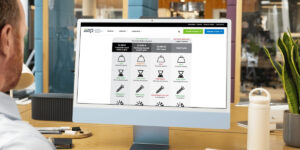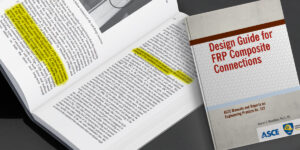Understand how fiber-reinforced polymer’s inherent limitations undermine cladding support over time—and why composite metal hybrid systems consistently deliver dependable, long-term performance for continuous insulation
Introduction
For building enclosure designers, the term “unavoidable failure” is alarming. Yet, it’s a reality when using all-FRP (fiber-reinforced polymer) continuous insulation systems for cladding support. FRP components can be very strong in theory, but everyday issues at connections and fasteners often lead to failures that seem impossible to avoid. Why? Because FRP behaves differently than steel or other familiar materials, especially where wall assembly components connect. Let’s break down the key reasons FRP products experience these “unavoidable failures” in daily practice – and why designers are increasingly turning to hybrid systems like GreenGirt™ CMH and SMARTci® for reliability.
“Unavoidable Failure” at Connections
One big culprit is how FRP pieces are connected. Too often, designers detail FRP connections exactly like steel connections – and that’s a mistake. The American Society of Civil Engineers’ Design Guide for FRP Composite Connections notes that using improper “steel-like” connection details on pultruded FRP causes rapid stiffness and strength degradation in members. In other words, FRP loses its load-carrying ability quickly when connections aren’t tailored to its material properties. In the case study behind the guide, most connection details were inadequate, so failure became unavoidable due to the FRP’s low tensile and flexural stiffness.
The takeaway for designers: if you fasten FRP products like you would steel, the joints will loosen and weaken over time. Every day that an FRP connection like this is in service, it’s degrading – a ticking time bomb of sorts – that presents risks to society and concerns of trailing liability to designers and installers. This “unavoidable failure” at connections means we must design FRP joints very carefully (or choose better materials) to avoid nasty surprises in the field.
The Problem with Self-Tapping Screws
Another everyday headache is fastening into FRP with self-tapping screws. It sounds convenient – just drive screws into the FRP products – but pultruded FRP doesn’t hold fasteners the way wood or metal does. In fact, the ASCE Design Guide for FRP Composite Connections explicitly states that self-tapping screws are not a recommended fastening scheme into pultruded FRP. Why not? Because FRP is a composite of fibers and resin; it can’t form robust threads for the screw to bite into. Instead of a tight, reliable grip, the screw often ends up loose or stripped out. ASCE notes that historically there are only three acceptable ways to join pultruded FRP components:
-
- Bolted connections (through-bolts with nuts and washers),
- Adhesively bonded joints, and
- Combined bolting and bonding.
Plain self-tapping screws don’t make that list – a clear signal that relying on fasteners alone in FRP is asking for failure. In day-to-day construction, crews might attempt to drive sheet-metal screws into FRP girts or frames, only to find the connection weak. The screw might initially hold, but as loads fluctuate, time passes, and temperatures inside wall assemblies rise, the FRP around the screw can creep or crack, and the connection loosens. This is a frustrating “unavoidable failure” if you don’t have metal backing or another strategy to secure the fastener. Designers must either add additional hardware (like bolts or metal backplates) or consider alternative sub-framing systems to ensure connections stay tight for the long haul.
Drilled Holes as Failure Initiation Points
Even before the fastener goes in, just drilling a hole in FRP can weaken it. Unlike steel – which loses only the material you drilled out – FRP’s strength depends on continuous fibers. Once you cut those fibers, you introduce local weakness. Composite experts note that simply drilling a hole in composites sacrifices up to 60% of the load carrying capacity. Think about that – more than half the strength gone, just from the fastener hole! The act of drilling creates stress concentrations and often causes micro-cracks or delamination in the FRP layers around the hole. These damaged areas become failure initiation points that can spread under stress. In everyday terms, every screw or bolt hole in an FRP girt or clip is a natural weak spot where cracks can start. As a result, FRP connections usually need extra measures (like washers or metal backer plates) to spread out the force. Without those, the joint can tear or split at surprisingly low loads because the material was already compromised by the hole. Designers face a dilemma: you need to fasten FRP to something, but making the required holes inevitably undermines FRP’s strength. It’s another reason why FRP-only systems often struggle at connections – the very act of connecting them creates the seed of future failure.
Testing Unavoidable Failure of FRP vs. Permanent Fastening with CMH
Real-world tests have put FRP’s fastener problems into perspective. In laboratory conditions, the research team at Advanced Architectural Products simulated what happens when fasteners are heavily loaded in FRP over time and at elevated temperatures. The results were eye-opening. Generic FRP samples failed at roughly half their expected pull-out capacity – and some failed in under a minute. For example, one pultruded generic FRP product tested at 180°F failed in just 59 seconds when a fastener was loaded to 50% of its typical ultimate load. Even the best-case FRP in that test lasted only a couple of hours before giving out.
Watch the ASTM D7332 Service Temperature Durability 7-Day Test Video
Now contrast that with a composite metal hybrid solution like GreenGirt CMH, or even traditional 16-gauge steel: those were tested under a much higher load (90% of ultimate) at the same high temperature and did not ever fail!
This stark difference shows that fasteners in FRP loosen or pull out over time – a short-term hold – whereas a CMH system provides a reliable and permanent connection. One reason is the hybrid design: GreenGirt CMH integrates two continuous steel backer plates, so screws have solid metal to bite into, eliminating the creep and fragility of a fiber-only connection. The testing proves what designers fear in practice – an FRP product might work on day one, but under sustained load (especially with heat or weather), it’s prone to “unavoidable failure.” Meanwhile, CMH connections behave like steel connections – steady and strong over time – truly “permanent” fastening in the context of building façades.
Conclusion
For designers, “unavoidable failure” in FRP systems isn’t just a dramatic phrase – it’s a daily concern when dealing with connections and fasteners into all-FRP continuous insulation products. Poor connection detailing, the inability of FRP to hold self-tapping screws, the damage from necessary drilled holes, and actual tests showing FRP’s short-term hold all lead to one conclusion: FRP-only sub-framing has inherent weaknesses that are very hard to work around. This is why hybrid solutions have gained traction. GreenGirt CMH and SMARTci systems outperform FRP products by design, especially at those critical connections. By marrying durable metal with fiberglass composite elements, they leverage the best properties of both metal and fiberglass – thereby eliminating the concerns of FRP-only products.
In practice, that means a GreenGirt CMH continuous insulation or SMARTci building enclosure system can use common fasteners without the common failures: the steel components carry the load and protect the FRP, so connections stay tight and reliable. The result for architects, engineers, and contractors is peace of mind. Instead of worrying about “unavoidable failure” at connections, you can trust that a CMH system will keep the cladding secure for the long term, all while providing the thermal benefits that drew us to FRP in the first place. In short, composite metal hybrid systems turn FRP’s “unavoidable failures” into everyday successes, allowing designers to focus on creativity and performance rather than troubleshooting loose screws and cracked connections.
To learn more about best practice composite metal hybrid solutions, please visit GreenGirt.com.

